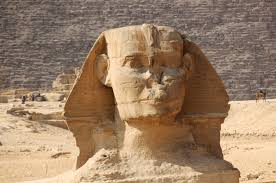While there are various Midrashic comments on what “chukos” – the embrace of which leads to the overflowing blessings described at the start of the parsha – refers to, the simple meaning of the word is “ decrees”, i.e., laws that may not be consonant with, or may even defy, human reason.
The blessings describe a utopian world, and so there must be ultimate significance to their being dependent on our acceptance of such reason-defying laws.
And, indeed, the essence of dedication to the Divine lies in unquestioning obedience, in the recognition that Hashem’s directives must override our personal, philosophical or practical concerns. That was what Avraham was ready to accept at the akeida, and what his descendents accepted when they followed Moshe into a barren and unforgiving desert.
That unquestioning trust of Divine will is called temimus, “pure simplicity” – in the phrase’s most sublime sense.
As Rava told a heretic who ridiculed his self-harming alacrity: “We Jews act with simple purity, as it says [in Mishlei 11:3], ‘The simplicity [tumas] of the upright will guide them’. ” (Shabbos 88b).
The Shem MiShmuel notes that the “seven weeks” that are counted from Pesach to Shavuos are pointedly called sheva Shabbasos temimos – “seven perfect weeks.” He sees in the word temimos a hint to the mindset they are meant to cultivate: one of temimus, the bending of our intellects and hearts to Divine will. And that is, in fact, central to what we celebrate at the denouement of sefiras ha’omer, Shavuos.
Because, at Mattan Torah, which we celebrate on that holiday, our forebears’ unanimous declaration was: “Naaseh v’nishma” – “We will do and we will hear!” That is to say, we accept the Torah’s laws even amid a lack of “hearing,” of understanding.
Even the laws of the Torah that we feel we can understand, that seem entirely just and proper, are to be observed, in the end, because they are… laws of the Torah. So, even when we return a lost object or compensate someone for damage we have caused him, we do so, ultimately, not because it is “just” in our estimation but rather because Hashem has declared it so.
© 2024 Rabbi Avi Shafran









